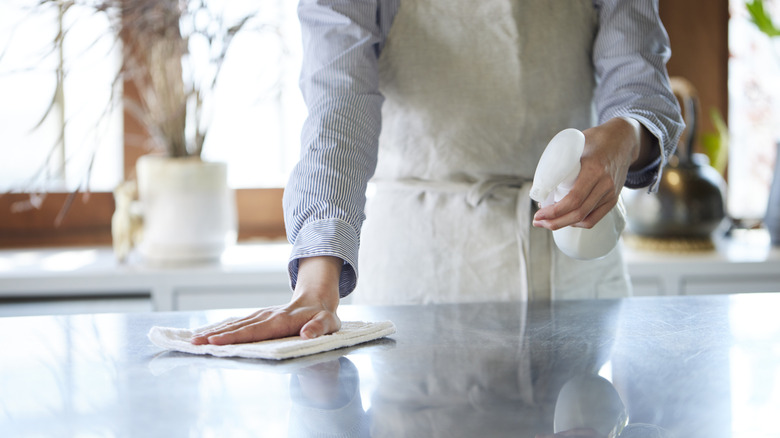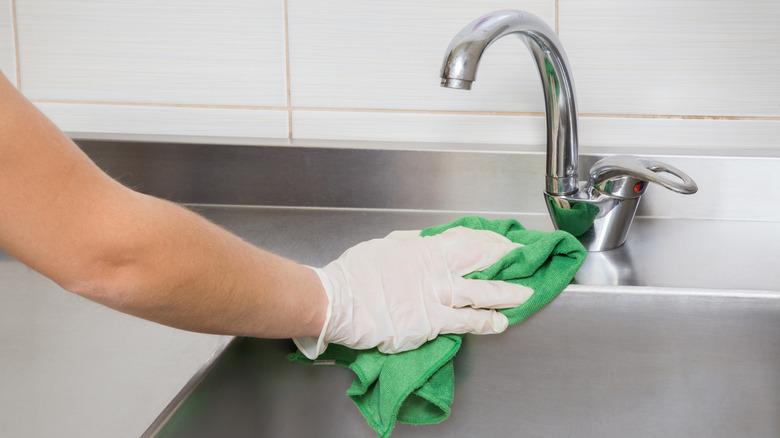The Only Stainless Steel Surface You Can Clean With Vinegar & Oil
We may receive a commission on purchases made from links.
Cleaning stainless steel appliances in your home can be challenging with all the fingerprints and streaking that occurs. Stainless steel can get scratched up pretty easily, so you have to be careful when choosing abrasive or chemically-made products. Hard water deposits that leave a film or white substance on your stainless steel can also be damaging. Caring for your stainless steel is important to ensure that they stay clean and shiny, and it may take some more care than you're expecting. Many people believe that a combination of oil and vinegar is best to keep your stainless steel gleaming, but the only surface that you can clean well with this method is your sink.
Vinegar is an excellent and resourceful cleaning tool for your kitchen. Its acidic properties are powerful at breaking down stains, grease, and mineral deposits. Many multi-purpose cleaners contain vinegar. The best type of vinegar for cleaning is white distilled because it doesn't have any added colors. There are multiple DIY cleaning solutions to use with vinegar for your home.
Oil is helpful when cleaning because it can be used to polish and adds shine, but the type of oil matters. Baby oil is not recommended for cleaning since it holds onto dust. Using mineral or olive oil are better options when cleaning. Use a food grade mineral oil if you're not using regular olive oil, like this Thirteen Chefs Mineral Oil. The truth about using olive oil for your kitchen sink is that it helps repel new stains or grime to keep your sink cleaner, longer. You also need a good microfiber cloth for polishing, like these Amazon Basics Microfiber Cleaning Cloths.
The key steps to using vinegar and oil to clean your stainless steel sink
It's important to note that when cleaning your stainless steel sink, you should always wipe with the grain. It helps to eliminate streaks and smudges. Your sink is one of the dirtiest spots in the kitchen that should be cleaned daily. The reason the sink is the best place for this oil-and-vinegar cleaning combo is that water is constantly running through it. Any residue that may be left over by your vinegar/oil mixture can easily be washed away. If you clean other stainless steel appliances with oil and vinegar, the products may stay on the appliance. Without being rinsed away easily, your stainless steel could end up being smelly from the vinegar and filmy from the oil.
To clean your sink with vinegar and oil, mix ⅓ cup of your chosen oil with ⅓ cup of white vinegar in a spray bottle (or just equal parts of each). Shake it up well before use. Spray it in your sink and use a dry microfiber cloth or paper towel to wipe it with the grain. You'll be amazed at how the smudges and marks disappear. If you want to go over it again or restore shine, you can add a couple of drops of oil to your cloth or paper towel (again, going with the grain when wiping) to further buff and polish the stainless steel.

